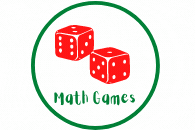Coordinate Plane with Quadrants
The coordinate plane is an essential concept in mathematics, providing a graphical representation of numbers and their relationships. It consists of a grid-like structure formed by two perpendicular number lines called axes. These axes intersect at a point known as the origin. In this article, we will explore the coordinate plane in detail, focusing specifically on its four quadrants and their significance.
Worksheets on Coordinate Graphs
- Graphs and data 2
- Graphs and data 3
- Graphs and data 4
- Graphs and data 5
- Graphs and data 6
- Graphs and data 7
- Graphs and data
Video On Coordinate Graphs
1. Understanding the Coordinate Plane
The coordinate plane, also known as the Cartesian plane, is a two-dimensional grid used to represent points in a mathematical space. It consists of two perpendicular lines referred to as the x-axis and y-axis. These axes divide the plane into four equal sections known as quadrants.
2. The Origin and Axes
At the center of the coordinate plane lies the origin, denoted by the coordinates (0, 0). The x-axis extends horizontally to the right and left of the origin, while the y-axis extends vertically above and below the origin. The axes are labeled with positive (+) and negative (-) values, allowing us to locate points in the plane.
3. Introducing Quadrants
The coordinate plane is divided into four quadrants, numbered I, II, III, and IV, in a counter-clockwise manner. Each quadrant has its own unique characteristics and sign conventions, which play a crucial role in determining the location of points and understanding their relationships.
4. Quadrant I: The Positive Right Side
Quadrant I is located in the upper right portion of the coordinate plane. It contains points with positive x-coordinates and positive y-coordinates. As we move to the right along the x-axis, the values increase, and as we move up along the y-axis, the values also increase.
5. Quadrant II: The Positive Left Side
Quadrant II is situated in the upper left portion of the coordinate plane. It consists of points with negative x-coordinates and positive y-coordinates. Moving to the left along the x-axis results in decreasing values, while moving up along the y-axis still leads to increasing values.
6. Quadrant III: The Negative Left Side
Quadrant III lies in the lower left portion of the coordinate plane. It contains points with negative x-coordinates and negative y-coordinates. As we move to the left along the x-axis, the values decrease, and as we move down along the y-axis, the values also decrease.
7. Quadrant IV: The Negative Right Side
Quadrant IV is located in the lower right portion of the coordinate plane. It consists of points with positive x-coordinates and negative y-coordinates. Moving to the right along the x-axis leads to increasing values, while moving down along the y-axis results in decreasing values.
8. Visualizing Points in the Coordinate Plane
To visualize points in the coordinate plane, we use ordered pairs, represented as (x, y). The x-coordinate indicates the horizontal position of the point, while the y-coordinate represents the vertical position. By plotting these points on the plane, we can understand their relationships and analyze various mathematical concepts.
9. Plotting Points in Different Quadrants
When plotting points in the coordinate plane, it is crucial to consider the signs of the x and y-coordinates to determine the correct quadrant. For example, a point with positive x and y-coordinates will lie in Quadrant I, while a point with negative x and positive y-coordinates will fall in Quadrant II.
10. Determining the Quadrant of a Point
To determine the quadrant of a point, we analyze the signs of its x and y-coordinates. If both values are positive, the point is in Quadrant I. If the x-coordinate is negative and the y-coordinate is positive, the point is in Quadrant II. Similarly, if both values are negative, the point lies in Quadrant III. If the x-coordinate is positive and the y-coordinate is negative, the point is in Quadrant IV.
11. Applications of the Coordinate Plane
The coordinate plane finds applications in various fields such as geometry, physics, computer science, and engineering. It is used to solve equations, graph functions, analyze geometric shapes, model real-world scenarios, and determine distances and slopes.
12. Finding Distances and Slopes
By utilizing the coordinate plane, we can calculate the distance between two points using the distance formula. Additionally, the slope of a line can be determined by analyzing the change in y-coordinates relative to the change in x-coordinates between two points.
13. Graphing Linear Equations
Linear equations can be graphed on the coordinate plane, allowing us to visualize their solutions and understand their behavior. By plotting multiple points and connecting them, we can represent straight lines that correspond to the equations.
14. Coordinate Plane in Real Life
The coordinate plane has practical applications in everyday life. It is used in navigation systems, map reading, tracking locations, analyzing data trends, and designing graphical representations such as floor plans and blueprints.
15. Conclusion
The coordinate plane is a fundamental tool in mathematics that provides a graphical representation of numbers and their relationships. By understanding the four quadrants and their characteristics, we can accurately locate points, graph equations, and solve problems in various fields. The coordinate plane's versatility and widespread applications make it an essential concept to grasp for anyone studying mathematics or pursuing a career in a related field.
FAQs (Frequently Asked Questions)
Q1: What is the purpose of the coordinate plane? The coordinate plane is used to represent points in a mathematical space, allowing us to analyze their relationships, graph equations, and solve problems.
Q2: How many quadrants are there in the coordinate plane? The coordinate plane is divided into four quadrants: Quadrant I, Quadrant II, Quadrant III, and Quadrant IV.
Q3: How can I determine the quadrant of a point? To determine the quadrant of a point, analyze the signs of its x and y-coordinates. Positive x and y-coordinates indicate Quadrant I, negative x and positive y-coordinates indicate Quadrant II, negative x and y-coordinates indicate Quadrant III, and positive x and negative y-coordinates indicate Quadrant IV.
Q4: What are some applications of the coordinate plane? The coordinate plane finds applications in geometry, physics, computer science, engineering, navigation systems, map reading, data analysis, and graphical design.
 Math Quizzes Online - Addition, subtraction, Geometry, Comparison, Algebra, Shapes, Time, Fractions, Decimals, Sequence, Division, Metric system, Logarithms, ratios, probability, multiplication
Math Quizzes Online - Addition, subtraction, Geometry, Comparison, Algebra, Shapes, Time, Fractions, Decimals, Sequence, Division, Metric system, Logarithms, ratios, probability, multiplication
These quizzes range from multiple choice math quizzes, gap fill quizzes, matching exercises, hotspot quizzes with graphics and more for interactive math practice.
 This exercise will help kids practice Math in a fun way. Kids related to games very well. From preschool / kindergarten to grade 6 levels of math games. There are games for the following topics:
This exercise will help kids practice Math in a fun way. Kids related to games very well. From preschool / kindergarten to grade 6 levels of math games. There are games for the following topics:
The games include among other : memory games, Walk the plank, Fling the Teacher, En Garde Duel, Basketball Game, Penalty Shoot and more.
Website General Content:
math activities for children, maths for kids, math games and exercises, math worksheets, printables, online, interactive, quizzes, for kindergarten, preschool, first grade, math practice, for teachers and parents, teach your kids math, help kids learn maths
